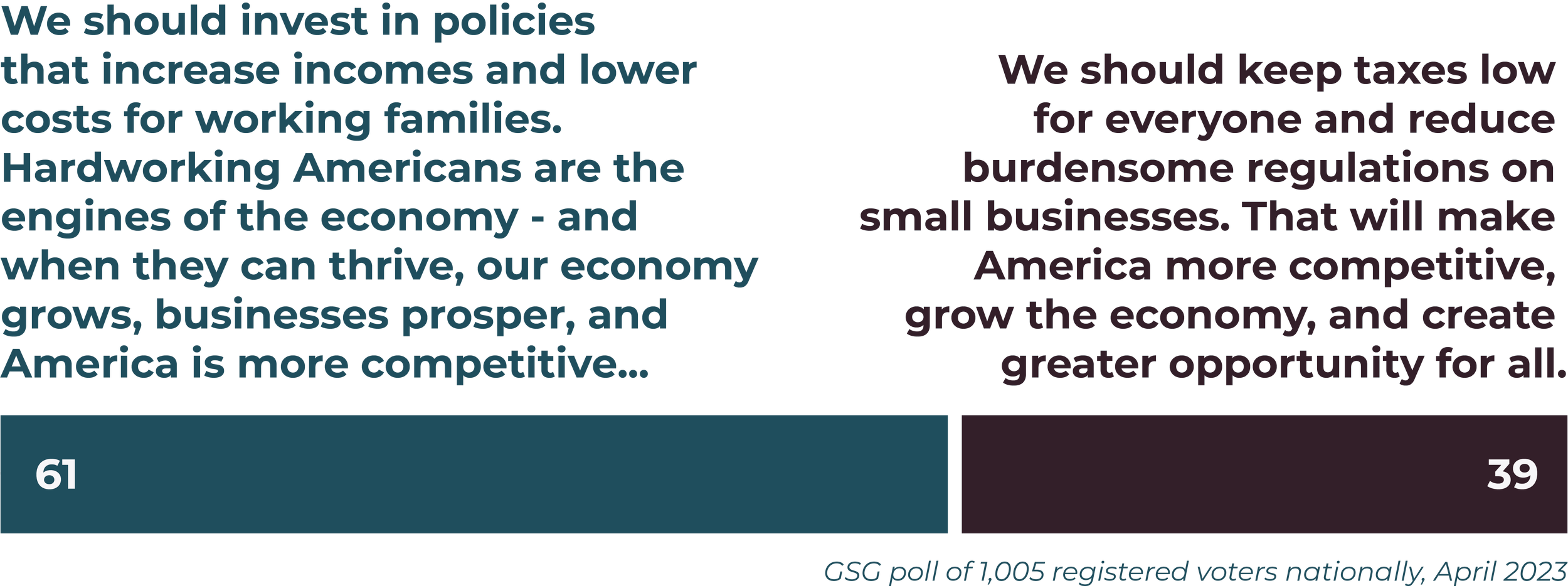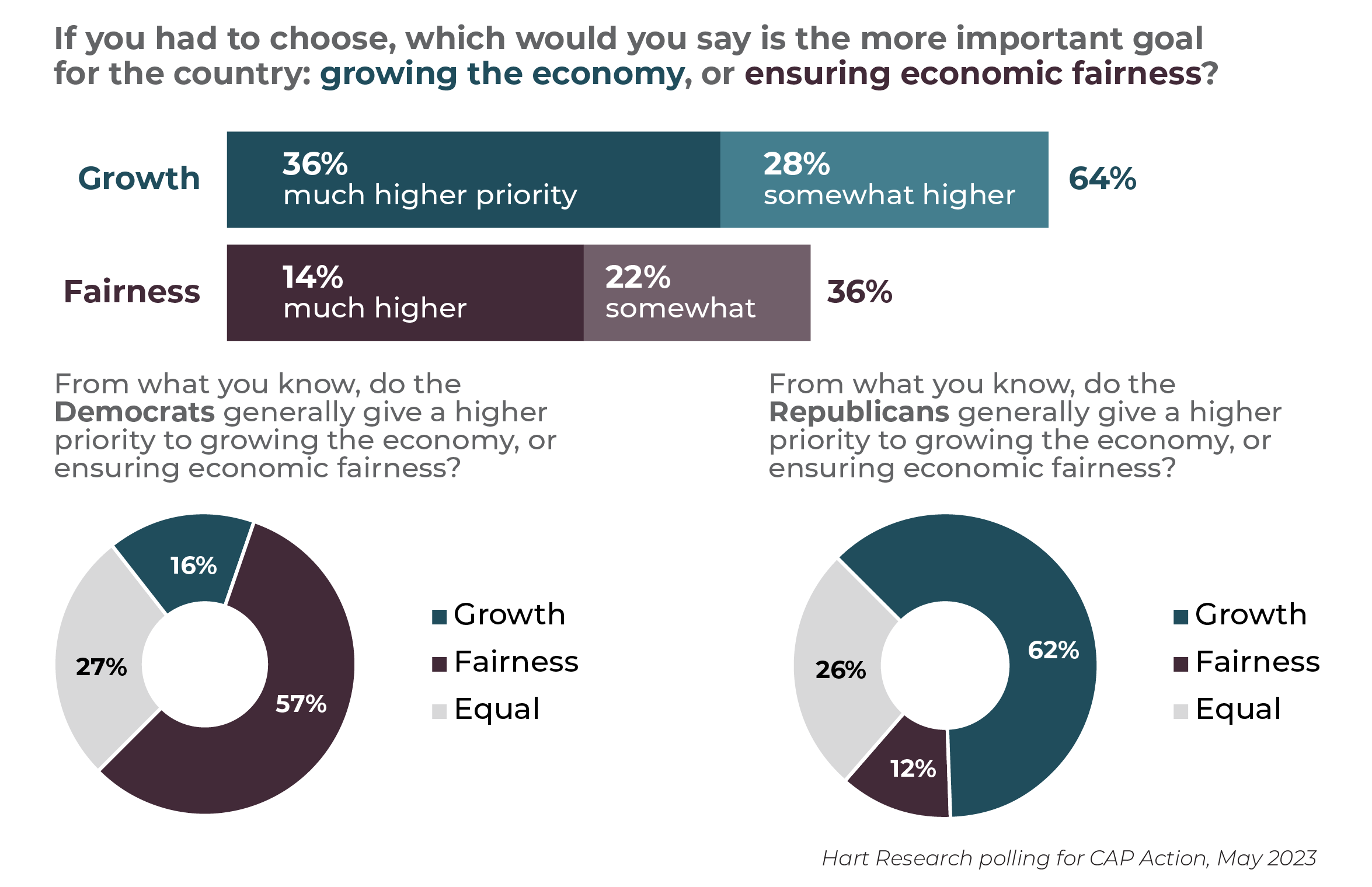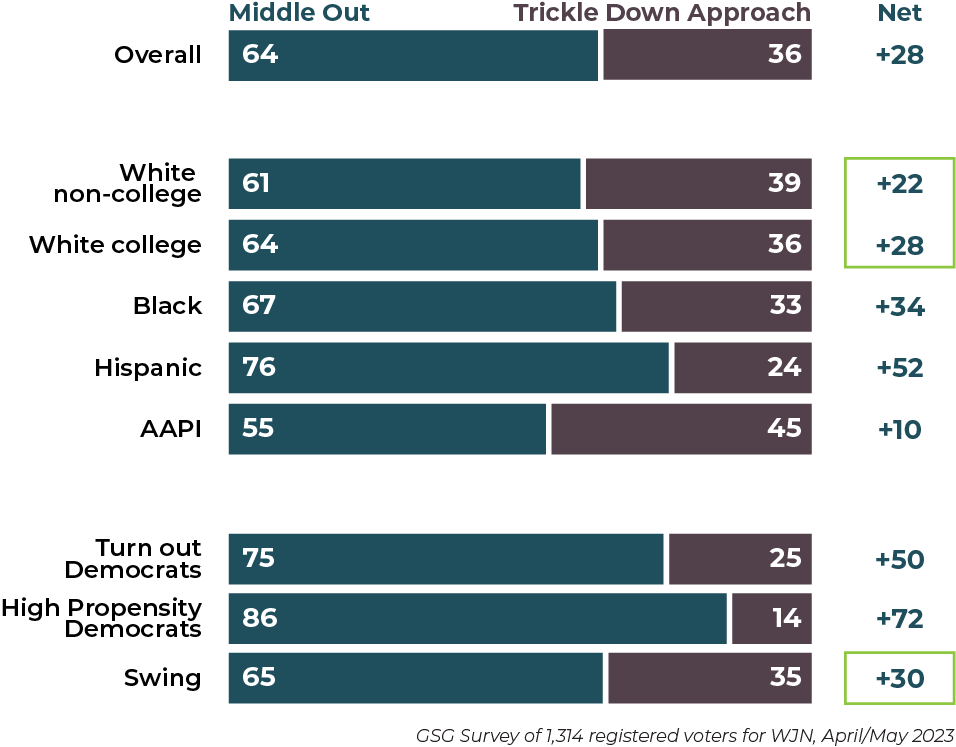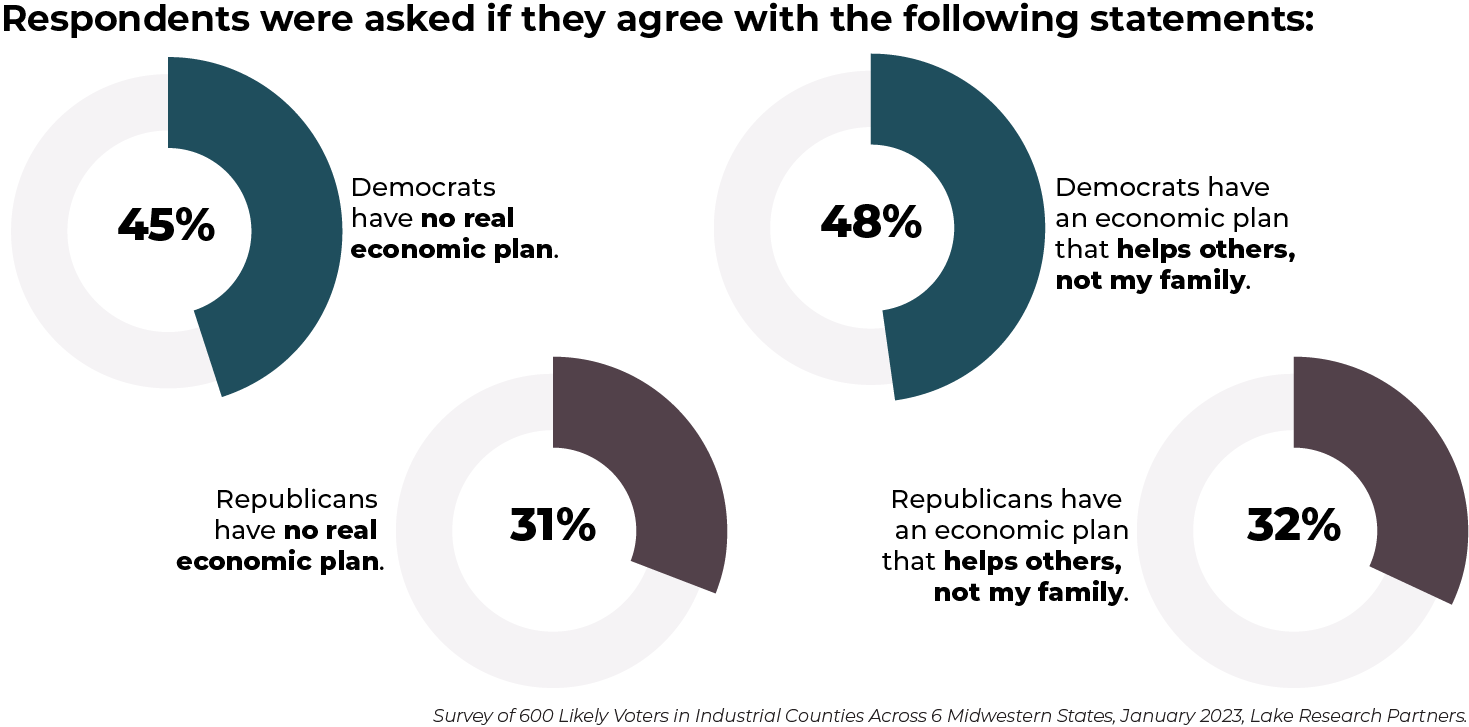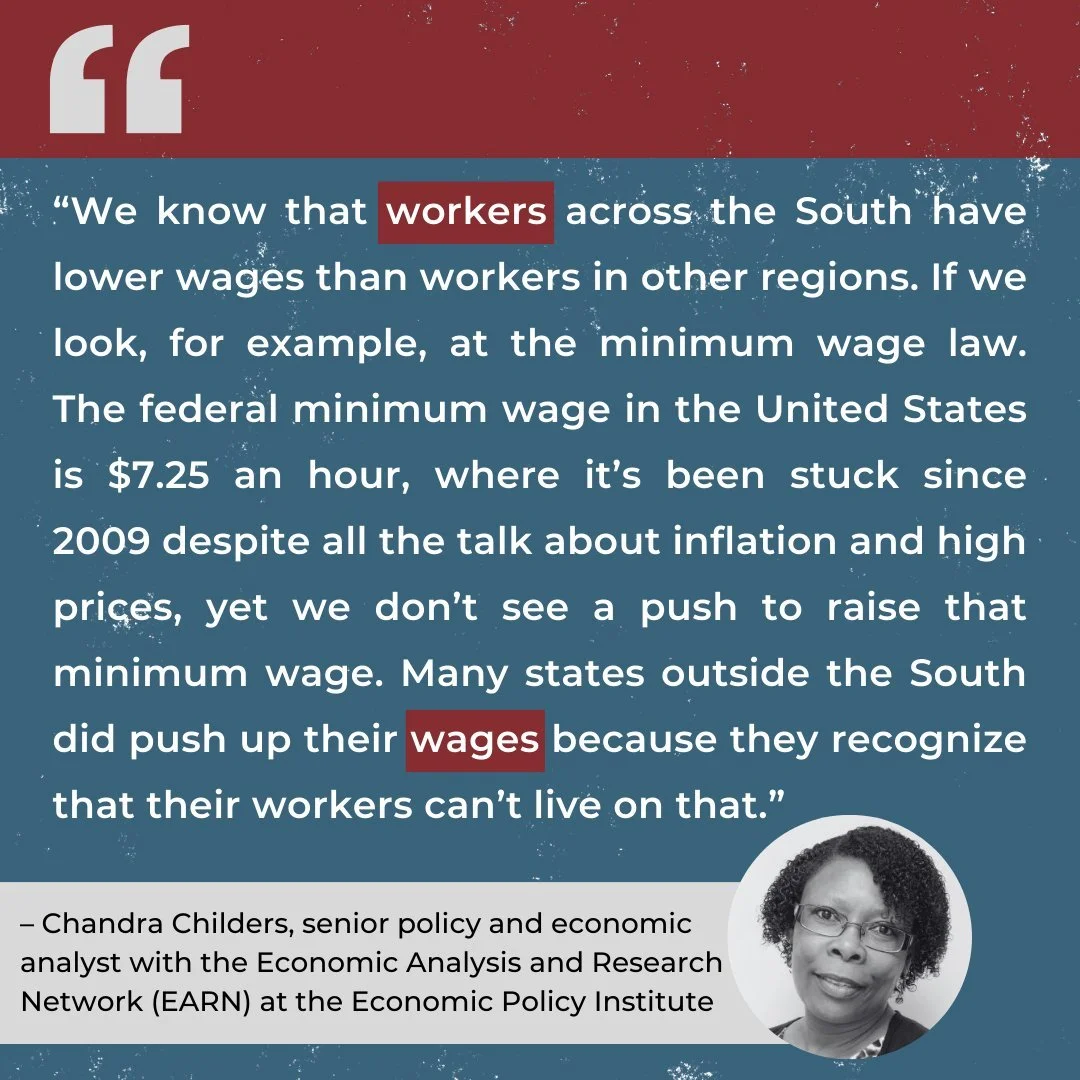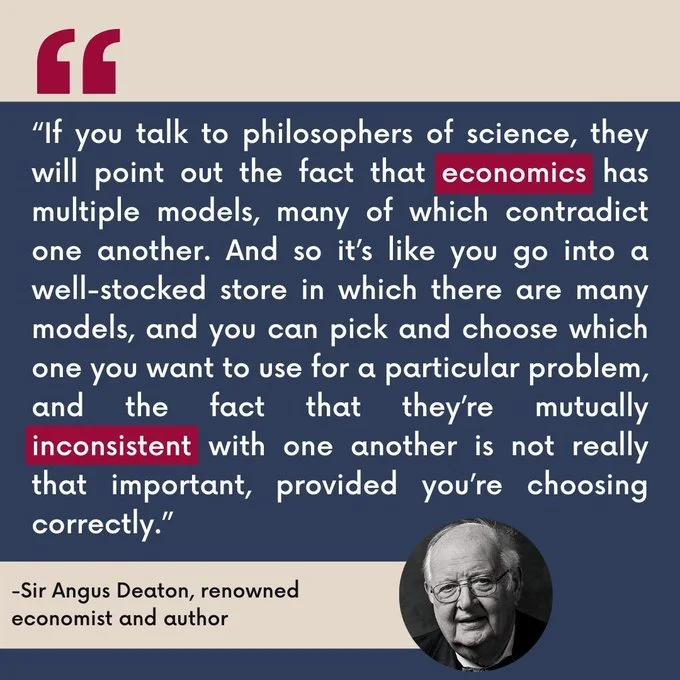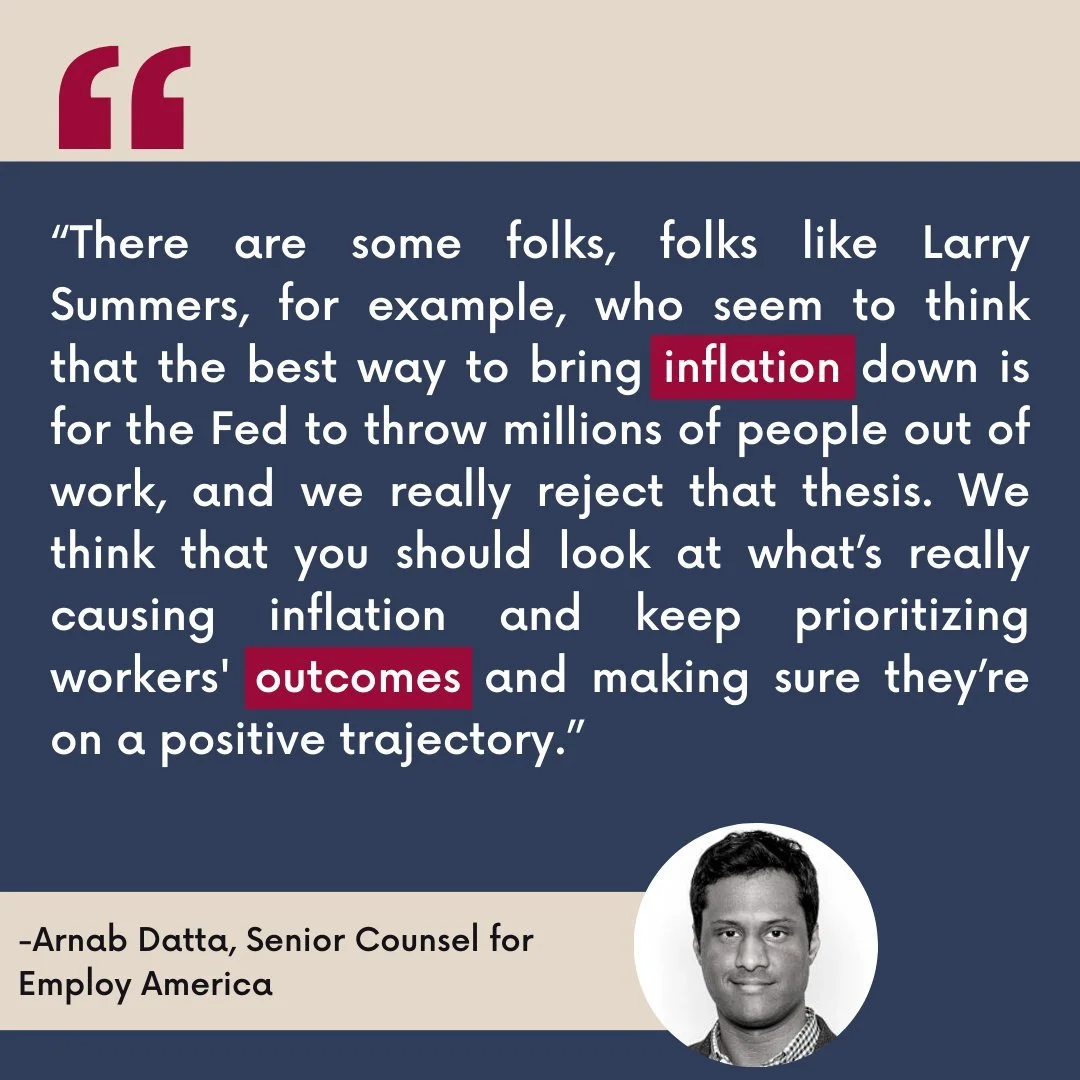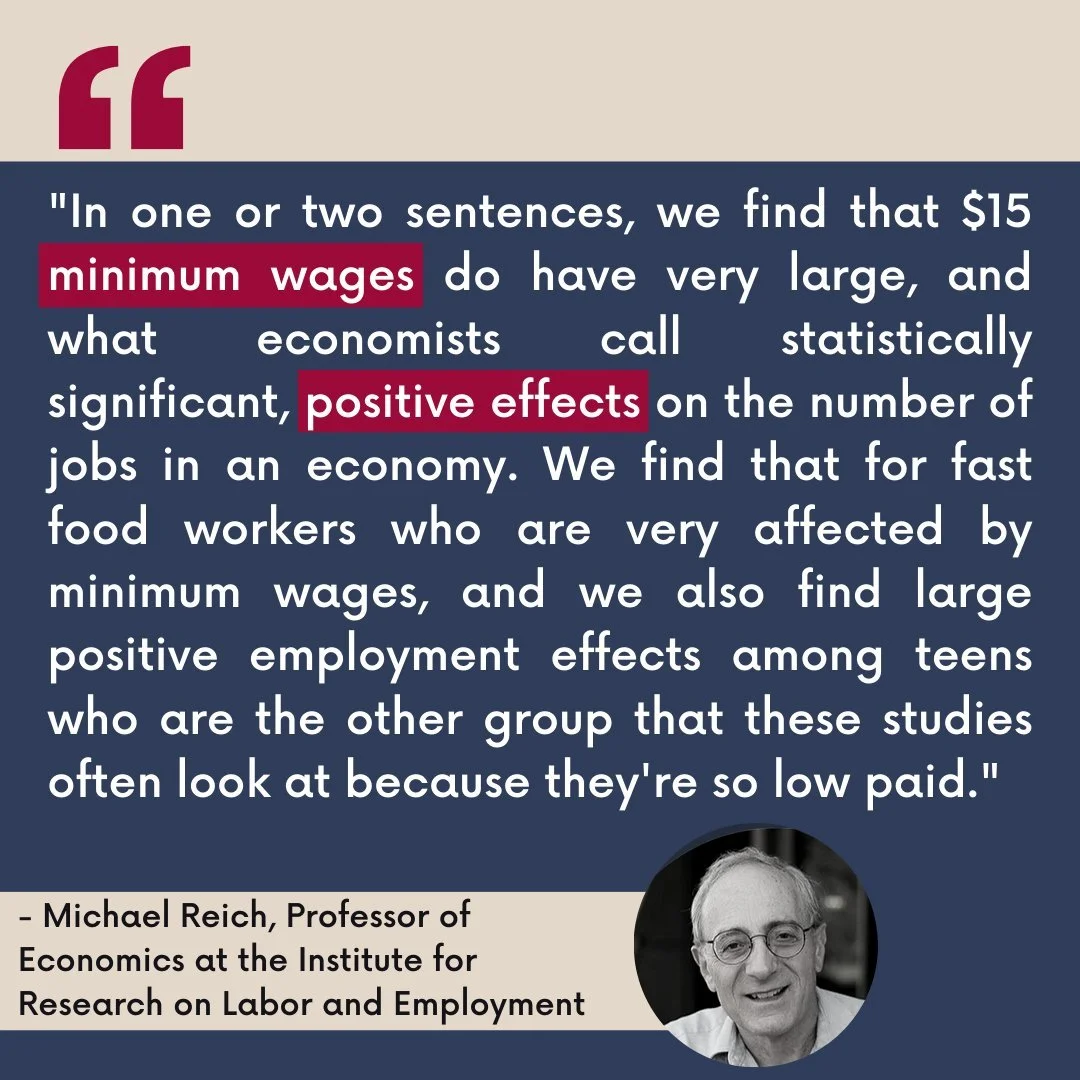The Economy
How to Talk About the Economy and Win from the Middle Out
We are in the midst of a historic transformation of the dominant economic narrative from trickle-down to middle-out economics, driven by progressive values, strong public opinion polling, and bold elected officials who understand the importance of narrative. If we tell the middle-out story and continue to enact policies grounded in these economics, we will radically improve the lives of hard-working Americans and secure our democracy. We will win at the ballot box, and we will win progressive economic dominance for generations.
“I’m tired of trickle-down economics. I want to build this economy from the bottom up and the middle out. When that happens, poor folks have a shot, the middle class does well, and the wealthy never get hurt. They’re doing just fine.” —President Joe Biden
How to Talk
About Middle Out
The Middle-Out Story
A thriving middle class is the source of economic growth. The economy isn’t money or GDP or the stock market. It is people. And the more people we include in the economy — as consumers, innovators, entrepreneurs, workers, and citizens — the more the economy will grow. Inclusion causes economic progress.
The middle-out story centers hard-working Americans, focuses relentlessly on how our policies drive growth, and simply makes sense to voters. It's also the way to win — especially in an era when talk of rising prices, labor shortages, and recession is in the headlines and on voters' minds. In the middle-out economic story, people don't have to choose between growth and fairness. The splendid truth is that the policies you’re probably already working on to promote fairness and equity are the same policies that drive growth and prosperity; we just need to talk about them differently.
Tell the Whole Story
Telling the whole story is how we win over undecided voters and strengthen our base. We tell the whole story by emphasizing that our policies are simultaneously the right thing to do and will broadly improve economic outcomes for everyone. When we talk about how the economy really works and where prosperity really comes from – we win.
Why growth wins: When you connect a targeted policy like raising the minimum wage to a universal benefit like increasing growth, it brings people along. Growth allows everyone to see themselves in every policy because "growth" is code for "this is good for you too."
DO:
Do connect every issue to economic growth. Every explanation of every issue needs to connect the dots between the issue at hand and how it leads to either higher incomes or lower costs — because what grows the economy is putting more money in the pockets of middle-class Americans.
Do center people as the real job creators. Hard-working Americans are the real job creators and the hero of every story. When billionaires get more money from tax cuts, they hoard it. When consumers have more money, businesses have more customers and hire more workers.
Do name villains. Name and blame the CEOs, the super-rich, and mega-corporations who have rigged the system to work in their favor at the expense of everyone else.
Do win the argument over cause and effect. A thriving middle class isn’t the result of a strong economy, it’s the source of a strong economy.
DON’T:
Don’t accept a tradeoff between fairness and growth. Every policy needs to be about both fairness and growth. Every policy you support will benefit a majority of people by raising wages or lowering costs, which will create jobs and economic growth.
Don’t reinforce the belief that the stock market is the economy. Stocks often rally on news of lower wages and higher unemployment. People are the economy, not the market.
Don’t center government. Most people don’t want to be saved by the government, they want the government to work on their side by putting tax dollars to work for middle-class Americans instead of the super-rich and powerful corporations.
Don't make it complicated. It's not. You don’t need charts and graphs to understand that when hard-working Americans have more money, they put that money right back into our economy. More money in the pockets of more workers means more money for more businesses, which means more jobs.
Here are some examples of how this can all come together:
It’s the Economy, Stupid
The economy is by far the top issue for voters, and the data shows that Democratic presidents wildly outperform Republicans on jobs and economic growth.
Furthermore, specific economic issues pursued by Democrats, like raising the minimum wage and expanding child tax credits, are time and again found to be popular.
But poll after poll consistently finds that voters trust Republicans more on the economy.
Growth Beats Fairness
If people are forced to choose between "growing the economy" and "ensuring economic fairness," they choose growth by 28 points. Moreover, they believe Democrats make the opposite choice and prioritize fairness over growth — by 41 points! — while Republicans prioritize growth by 50 points. Trust in government is low, so most voters tend to think of government policies to advance fairness as things that involve someone else getting benefits, while policies that benefit growth ought to naturally benefit everyone. That's why when we say justice and they say growth, they win. Every time.
Instead of forcing voters to choose between their growth and our fairness — a battle we consistently lose — middle-out centers a thriving middle class as the source of economic prosperity, and doesn’t force a choice between fairness and growth. Policies that benefit hard-working Americans also generate economic growth, and inclusive growth benefits everyone. Everyone can see how they benefit from middle-out economics.
The Middle-Out Narrative Wins
Middle-out economics changes the conversation by putting hard-working Americans at the center of our narrative — not the CEOs and zillionaires who drive the trickle-down story. Applying a middle-out framework to Democratic economic policies is transformative. It lets us explain that:
Our agenda is good for the economy because it's good for people. A thriving middle class is the source of economic growth, so policies that benefit hard-working Americans benefit the economy.
Including more people in the economy grows the economy — in fact, this is the cause of growth in a consumer economy. Higher wages and lower prices aren't a luxury we need to figure out if we can afford; they're how growth happens.
Managing markets to raise wages and lower costs for hard-working Americans boosts the economy. Increasing levels of competition and innovation benefit everyone.
MIDDLE OUT: The best way to grow the economy is by raising Americans' incomes and lowering costs so working people can thrive – and when working people thrive, that also benefits businesses.
TRICKLE DOWN: The best way to grow the economy is to cut taxes and reduce regulations so businesses can thrive – and when businesses thrive, that also benefits working people.
Republicans Have Owned
the Issue of Economic Growth
Republicans do something that Democrats don’t: they articulate economic growth as a top priority, and they have a compelling story to tell about what makes growth happen. Their story is that CEOs and entrepreneurs are the job creators, so if we cut taxes and reduce regulations, then corporations will prosper, innovation will be rewarded, the economy will grow, and people will benefit. This trickle-down narrative is entirely backward and completely false, but it resonates with voters because it's been deeply entrenched in our discourse about the economy for decades.
For forty years, Democrats across the ideological spectrum have embedded this same basic trickle-down logic about the causes of economic growth into their thinking, particularly the assumption that there is a fundamental tradeoff between fairness and growth. We have accepted that this tradeoff exists, and just argued for a slightly different balance: a bit less growth in exchange for a bit more fairness. Republicans, meanwhile, always put growth first.
From the Pitchfork Economics podcast…
The Failed Southern Economic Development Model
(with Chandra Childers)
Exploring American Inequality
(with Nobel Laureate Angus Deaton)
Working Toward a Full Employment Economy
(with Arnab Datta)
Higher Minimum Wages Are Creating More Jobs
(with Michael Reich)
Additional Resources
Our 40-year Economic Experiment: Did it work?
The Transformation at the Heart of Biden’s Middle-Out Economic Agenda
The economy is not about money; it’s about people.
By Nick Hanauer
The American Prospect, February 9, 2023
The last forty years of Presidents all have this economic theory in common– except for one.
Winning Jobs Narrative
The Winning Jobs Narrative offers an incredible array of valuable messaging resources, including:
An excellent Overview of their approach.
A Toolkit on their narrative architecture for talking about jobs and the economy.
A Messaging Guide for talking about the American Rescue Plan, Bipartisan Infrastructure Law, CHIPS and Science Act, and Inflation Reduction Act.
Biden Forges a New Democratic Paradigm
The president repudiates the neoliberal ideologies of the past and puts the party on solid economic and political ground.
By Harold Meyerson
The American Prospect, February 8, 2023
Boost or Bust: Jobs and Places
Why Are Republican Presidents So Bad for the Economy?
G.D.P., jobs and other indicators have all risen faster under Democrats for nearly the past century.
By David Leonhardt
The New York Times, February 2, 2021
-
The President’s economic plan is proving that when America invests in ourselves – especially in our infrastructure, clean energy, and high-growth industries that are critical to our economic and national security – we can build a bottom-up and middle-out economy.
January 4, 2023 • Biden Administration Briefing Room Statements & Releases
-
“My economic plan has always been to grow our economy from the bottom up and the middle out. Today we learned that unemployment is at a 50-year low after the two strongest years of job growth ever. We’re creating jobs. We’re lowering costs. Our plan is working.”
January 6, 2023 • Tweet from @POTUS
-
“At Rural Development, we believe when we invest in rural communities, we are supporting the hard work that sends a ripple effect across our country…That’s why we champion rural people by investing in critical services like wastewater infrastructure and health care facilities. These investments improve the quality of life for rural families and build the economy from the bottom up and the middle out.”
January 31, 2023 • Xochitl Torres Small, USDA Rural Development Undersecretary
-
“For decades, the middle class was hollowed out. Too many good-paying manufacturing jobs moved overseas. Factories at home closed down. Once-thriving cities and towns became shadows of what they used to be. And along the way, something else was lost. Pride. That sense of self-worth.
I ran for President to fundamentally change things, to make sure the economy works for everyone so we can all feel pride in what we do. To build an economy from the bottom up and the middle out, not from the top down. Because when the middle class does well, the poor have a ladder up and the wealthy still do very well. We all do well.”
February 7 ,2023 • President Biden’s State of the Union address
-
“The reason I ran was to rebuild the backbone of this nation — the middle class — and grow the economy from the bottom up and the middle out, not from the top down.
Because, look, when, in fact, you build it that way, everybody does well. The rich still do very well. They don’t get hurt. It’s not a punishment, you know? But when it’s trickle down, not a whole lot dropped on our kitchen table when I was growing up. Not much trickle there. And we’re changing that.”
March 1, 2023 • President Biden
-
“President Biden’s Investing in America agenda is growing the American economy from the bottom up and middle-out – from expanding access to high-speed Internet service, to rebuilding our nation’s roads and bridges, to building a clean energy economy that makes our communities more resilient to the impacts of climate change, to creating a manufacturing and innovation boom powered by good-paying jobs that don’t require a four-year degree.”
March 23, 2023 • National Telecommunications and Information Administration
-
“The U.S. Small Business Administration has finalized two rules to address persistent gaps in access to capital impacting small business owners in underserved communities as part of the Biden-Harris Administration’s effort to grow the economy from the middle out and bottom-up, not top-down. The final rules grant permanence to SBA’s program for nonprofit mission lenders, remove outdated limits on non-depository lender participation, increase opportunities for employee ownership, and modernize the credit criteria and underwriting standards to further incentivize a wider distribution network and small-dollar loans.”
April 12, 2023 • US Small Business Administration



